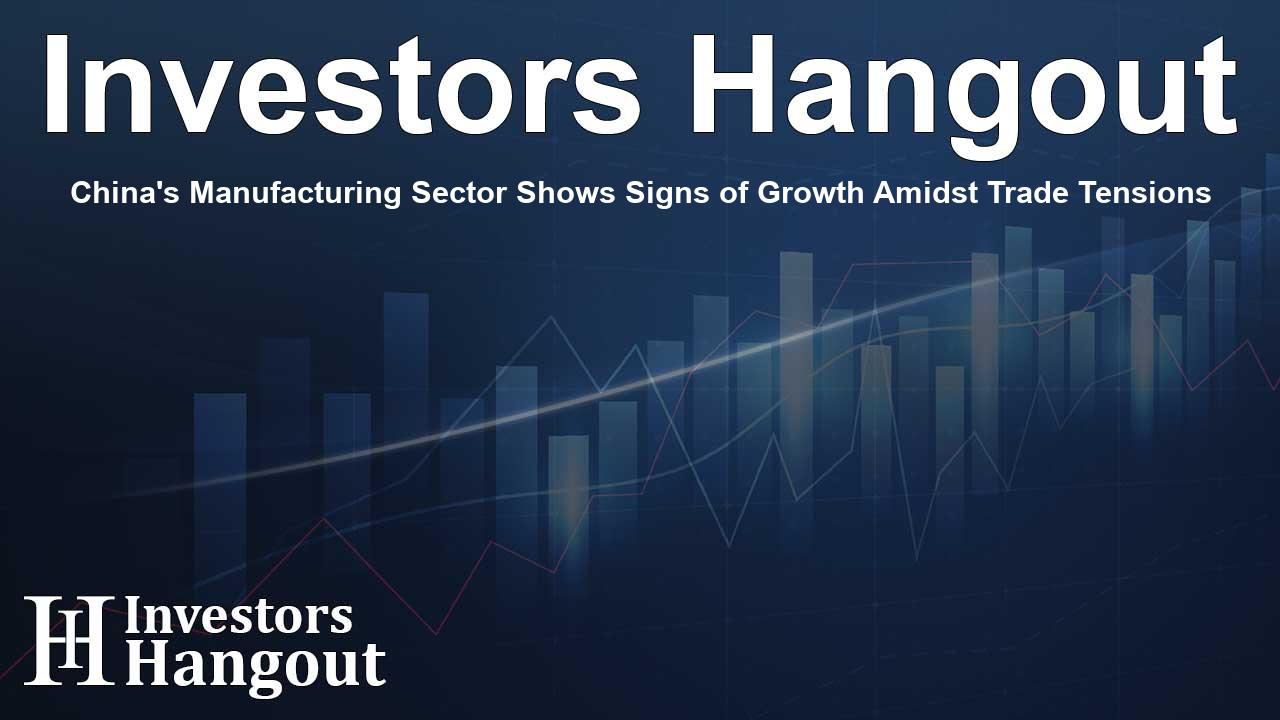China's Manufacturing Sector Shows Signs of Growth Amidst Trade Tensions

China's Manufacturing Growth Continues Amid Challenges
Recent reports indicate that China's manufacturing sector is likely to experience growth for the fourth consecutive month, signaling a robust supply-side performance in the world's second-largest economy. As the country prepares for potential tariff hikes from the U.S., concerns about weakened domestic demand and inflationary pressures persist.
Key Insights from the Manufacturing Sector
A survey conducted by analysts revealed that the official purchasing managers' index (PMI) for January is expected to hold steady at 50.1, the same level reported in December. This figure remains above the critical threshold of 50, which demarcates expansion from contraction in manufacturing activity.
Economic Performance and Outlook
China's economy, valued at approximately $18 trillion, has met the government's growth goal of around 5% for the year ahead. However, the growth has been uneven, with industrial production and exports outpacing consumer spending and resulting in a worrying unemployment rate.
Impact of U.S. Trade Policy
In the face of escalating trade tensions, the U.S. government's threats to impose tariffs on Chinese imports raises additional concerns for the Chinese economy. These punitive measures, set to take effect in early February, could heighten the dependency of China's economic growth on its export sector.
Trade Balance and Deflationary Effects
Last year, China reported a significant trade surplus of nearly $1 trillion. Producers have sought to export goods to offset weak demand domestically. Contributing factors include deflation at the factory level and a depreciated yuan, which have collectively rendered Chinese exports more competitive internationally.
Domestic Challenges Faced by Policymakers
While there is a notable focus on boosting exports, domestic challenges such as decreasing prices are severely affecting corporate profitability and worker salaries. In light of these challenges, policymakers are considering additional stimulus measures, although concerns remain that such initiatives may concentrate on industrial enhancements rather than support for households.
Strategies to Increase Domestic Demand
Chinese authorities have committed to revitalizing domestic consumption but have disclosed limited strategies apart from expanding trade-in programs that incentivize purchases of major consumer goods. Furthermore, efforts to alleviate the financial strain on property developers signify a recognition of the critical interplay between real estate stability and consumer spending.
Looking Ahead
Analysts express that improving consumer sentiment is essential for reducing the impact of potential tariff escalations. The private sector Caixin PMI remains a focal point, with estimates suggesting it will align at 50.5 when data is released shortly.
Frequently Asked Questions
What does the recent PMI data indicate about China's economy?
The PMI signals that China's manufacturing sector is expanding, reflecting a stable economic condition despite international pressures.
How could U.S. tariffs impact China's manufacturing?
Potential tariff increases could negatively affect China's reliance on exports for growth, posing challenges to domestic economic stability.
What measures is China taking to stimulate domestic demand?
China is implementing support programs, particularly for the property sector and consumer goods, to foster domestic consumption.
What factors influence China's trade surplus?
The trade surplus largely results from competitive pricing of exports, aided by a weakened yuan and factory deflation.
When can we expect to see the next manufacturing data release?
The next set of manufacturing data from the private sector is scheduled for release soon, which analysts anticipate will remain relatively stable.
About The Author
Contact Dominic Sanders privately here. Or send an email with ATTN: Dominic Sanders as the subject to contact@investorshangout.com.
About Investors Hangout
Investors Hangout is a leading online stock forum for financial discussion and learning, offering a wide range of free tools and resources. It draws in traders of all levels, who exchange market knowledge, investigate trading tactics, and keep an eye on industry developments in real time. Featuring financial articles, stock message boards, quotes, charts, company profiles, and live news updates. Through cooperative learning and a wealth of informational resources, it helps users from novices creating their first portfolios to experts honing their techniques. Join Investors Hangout today: https://investorshangout.com/
The content of this article is based on factual, publicly available information and does not represent legal, financial, or investment advice. Investors Hangout does not offer financial advice, and the author is not a licensed financial advisor. Consult a qualified advisor before making any financial or investment decisions based on this article. This article should not be considered advice to purchase, sell, or hold any securities or other investments. If any of the material provided here is inaccurate, please contact us for corrections.
